The TYPO3 ecosystem has taken a significant leap forward with the introduction of component-based frontend development in Fluid 4.3. This groundbreaking feature brings modern frontend development patterns directly into the TYPO3 world, offering developers a more maintainable, reusable, and collaborative approach to building web interfaces.
If you've been working with TYPO3's traditional templating system or struggling with the limitations of partials, this guide will walk you through everything you need to know about Fluid Components—from basic concepts to advanced implementation strategies.
This powerful feature is thanks to Simon Praetorius (@s2b), who spent three months bringing modern component-based patterns to TYPO3. His vision, development work, and clear documentation have made it easier for developers to adopt this modern approach. We’re grateful for his contribution to advancing TYPO3 frontend development.
What Are TYPO3 Fluid Components?
Fluid's components are custom HTML-like tags based on Fluid Templates that you can reuse throughout your project. The concept is similar to popular frontend frameworks like React and Vue or native Web Components, but they are server-rendered by PHP.
Think of components as self-contained, reusable pieces of UI that encapsulate both structure and behavior. Unlike traditional Fluid partials, components offer:
- Strict typing: Components have explicit argument definitions using the <f:argument> ViewHelper
- Global availability: No need to manually configure partial root paths in rendering contexts
- Clear APIs: Well-defined interfaces that make components less error-prone and more maintainable
- Better organization: Components encourage modular architecture with related assets grouped together
While partials and components might seem similar at first glance, they serve different purposes:
Traditional Partials:
<f:render partial="Button" arguments="{
variant: 'primary',
label: 'Click me'
}" />Modern Components:
<my:atom.button variant="primary">
Click me
</my:atom.button>The component approach is more intuitive, provides better IDE support (planned), and offers stricter type checking.
Why Fluid Components Matter for TYPO3's Future
Embracing Modern Frontend Patterns
The web development landscape has shifted dramatically toward component-based architectures. From React and Vue.js to native Web Components, developers expect modular, reusable UI building blocks. Components introduce a modern, component-based workflow that makes your frontend and integration work more modular, consistent and maintainable.
Improved Developer Experience
Components transform how teams collaborate on TYPO3 projects:
- Frontend developers can work independently on UI components
- Backend developers get clear, documented APIs for integration
- Project managers benefit from more predictable development timelines
- Designers can see their design systems implemented consistently
Better Maintainability
By encapsulating functionality in discrete components, you get:
- Easier debugging and testing
- Reduced code duplication
- Clearer separation of concerns
- Simplified refactoring processes
React vs Fluid Components: A Practical Comparison
Understanding how Fluid Components compare to React can help developers make informed architectural decisions.
Similarities
| Aspect | React | Fluid Components |
| Component Definition | JSX-based components | Fluid template-based components |
| Props/Arguments | Typed props with PropTypes/TypeScript | Typed arguments with <f:argument> |
| Composition | Component nesting and composition | Component nesting with <f:slot> |
| Reusability | Import and use anywhere | Global availability with namespaces |
Key Differences
Rendering Model:
- React: Client-side rendering (or SSR with additional setup)
- Fluid Components: Server-side rendering by default
Data Flow:
- React: Unidirectional data flow with state management
- Fluid Components: Template variables and context-based data
Learning Curve:
- React: Requires JavaScript/TypeScript knowledge
- Fluid Components: Uses familiar Fluid templating syntax
When to Choose What
Choose Fluid Components when:
- Building traditional TYPO3 websites with server-side rendering
- Working with TYPO3 content management workflows
- Team has strong Fluid/TYPO3 expertise
- SEO and performance are critical requirements
Consider React when:
- Building highly interactive applications
- Need complex client-side state management
- Developing headless TYPO3 implementations
- Team has strong JavaScript expertise
Getting Started: Your First Fluid Component
Prerequisites
You can start using components today in your Composer-based TYPO3 v13 projects by updating to the latest Fluid version. Ensure you have:
- TYPO3 v13+ with Composer
- Fluid 4.3+ installed
- Basic understanding of Fluid templating
Step 1: Set Up Component Collection
First, create a Component Collection class that defines where your components live:
<?php
namespace Vendor\MyPackage\Components;
use TYPO3Fluid\Fluid\Core\Component\AbstractComponentCollection;
use TYPO3Fluid\Fluid\View\TemplatePaths;
use TYPO3\CMS\Core\Utility\ExtensionManagementUtility;
final class ComponentCollection extends AbstractComponentCollection
{
public function getTemplatePaths(): TemplatePaths
{
$templatePaths = new TemplatePaths();
$templatePaths->setTemplateRootPaths([
ExtensionManagementUtility::extPath(
'my_sitepackage',
'Resources/Private/Components/'
),
]);
return $templatePaths;
}
}Step 2: Create Your First Component
Create a folder structure for your components. Following atomic design principles:
Resources/Private/Components/
├── Atom/
│ └── Button/
│ └── Button.html
├── Molecule/
│ └── Card/
│ └── Card.html
└── Organism/
└── Header/
└── Header.htmlCreate your first button component (Button/Button.html):
<f:argument name="variant" type="string" optional="true" default="primary" />
<f:argument name="size" type="string" optional="true" default="medium" />
<f:argument name="disabled" type="bool" optional="true" default="false" />
<button
class="btn btn--{variant} btn--{size}"
{f:if(condition: disabled, then: 'disabled="disabled"')}
>
<f:slot />
</button>Step 3: Use Your Component
In any Fluid template, import the namespace and use your component:
<html
xmlns:my="http://typo3.org/ns/Vendor/MyPackage/Components/ComponentCollection"
data-namespace-typo3-fluid="true"
>
<my:atom.button variant="secondary" size="large">
Get Started Now
</my:atom.button>
</html>
This renders as:
<button class="btn btn--secondary btn--large">
Get Started Now
</button>Real-World Examples
Building a Teaser Card Component
Let's create a more complex component that demonstrates composition and multiple arguments:
<!-- Components/Molecule/Card/Card.html -->
<f:argument name="title" type="string" />
<f:argument name="subtitle" type="string" optional="true" />
<f:argument name="image" type="string" optional="true" />
<f:argument name="link" type="string" optional="true" />
<f:argument name="variant" type="string" optional="true" default="default" />
<article class="card card--{variant}">
<f:if condition="{image}">
<div class="card__image">
<img src="{image}" alt="{title}" />
</div>
</f:if>
<div class="card__content">
<h3 class="card__title">{title}</h3>
<f:if condition="{subtitle}">
<p class="card__subtitle">{subtitle}</p>
</f:if>
<div class="card__body">
<f:slot />
</div>
<f:if condition="{link}">
<div class="card__footer">
<my:atom.button variant="outline">
<a href="{link}">Read More</a>
</my:atom.button>
</div>
</f:if>
</div>
</article>Usage:
<my:molecule.card
title="TYPO3 Components"
subtitle="Modern Frontend Development"
image="/images/typo3-logo.svg"
link="/learn-more"
variant="featured"
>
Discover how Fluid Components revolutionize TYPO3 frontend development
with reusable, maintainable UI building blocks.
</my:molecule.card>Form Components with Validation
Create a reusable form input component:
<!-- Components/Atom/Input/Input.html -->
<f:argument name="name" type="string" />
<f:argument name="type" type="string" optional="true" default="text" />
<f:argument name="label" type="string" optional="true" />
<f:argument name="placeholder" type="string" optional="true" />
<f:argument name="required" type="bool" optional="true" default="false" />
<f:argument name="value" type="string" optional="true" />
<f:argument name="error" type="string" optional="true" />
<div class="form-field {f:if(condition: error, then: 'form-field--error')}">
<f:if condition="{label}">
<label for="{name}" class="form-field__label">
{label}
<f:if condition="{required}">
<span class="form-field__required">*</span>
</f:if>
</label>
</f:if>
<input
type="{type}"
id="{name}"
name="{name}"
placeholder="{placeholder}"
value="{value}"
class="form-field__input"
{f:if(condition: required, then: 'required="required"')}
/>
<f:if condition="{error}">
<span class="form-field__error">{error}</span>
</f:if>
</div>Navigation Component with Active States
<!-- Components/Organism/Navigation/Navigation.html -->
<f:argument name="items" type="array" />
<f:argument name="currentPage" type="string" optional="true" />
<nav class="main-navigation">
<ul class="nav-list">
<f:for each="{items}" as="item">
<li class="nav-item {f:if(condition: '{item.url} == {currentPage}', then: 'nav-item--active')}">
<a href="{item.url}" class="nav-link">
{item.title}
</a>
<f:if condition="{item.children}">
<ul class="nav-submenu">
<f:for each="{item.children}" as="child">
<li class="nav-subitem">
<a href="{child.url}" class="nav-sublink">
{child.title}
</a>
</li>
</f:for>
</ul>
</f:if>
</li>
</f:for>
</ul>
</nav>Resources/Private/Components/
├── Atom/ # Basic building blocks
│ ├── Button/
│ ├── Input/
│ ├── Icon/
│ └── Link/
├── Molecule/ # Component combinations
│ ├── Card/
│ ├── SearchBox/
│ └── Breadcrumb/
├── Organism/ # Complex UI sections
│ ├── Header/
│ ├── Footer/
│ └── ProductList/
└── Template/ # Page-level layouts
├── Default/
└── Landing/Naming Conventions
Follow consistent naming patterns:
- PascalCase for component folder names (Button, SearchBox)
- kebab-case for CSS classes (btn-primary, search-box)
- camelCase for arguments (isActive, showIcon)
Component API Design
Design clear, intuitive component APIs:
<!-- Good: Clear, predictable arguments -->
<f:argument name="variant" type="string" optional="true" default="primary" />
<f:argument name="size" type="string" optional="true" default="medium" />
<f:argument name="disabled" type="bool" optional="true" default="false" />
<!-- Avoid: Too many optional arguments without good defaults -->
<f:argument name="buttonStyle" type="string" optional="true" />
<f:argument name="buttonColor" type="string" optional="true" />
<f:argument name="buttonBorder" type="string" optional="true" />Performance Considerations
- Keep components focused and lightweight
- Avoid deep nesting of components when possible
- Use caching strategies for expensive operations
- Consider using ViewHelper caching for static components
Common Pitfalls and How to Avoid Them
Pitfall 1: Over-componentization
Problem: Creating components for every small UI element, even when they're used only once.
Solution: Follow the "Rule of Three"—create a component when you need it in three different places, or when it has complex logic worth encapsulating.
<!-- Avoid: Over-componentizing -->
<my:atom.paragraph text="Simple text" />
<!-- Better: Use direct HTML for simple cases -->
<p>Simple text</p>Pitfall 2: Poorly Defined Component APIs
Problem: Components with unclear or inconsistent argument naming.
Solution: Establish clear conventions and document your component APIs:
<!-- Poor: Unclear naming -->
<f:argument name="btn_type" type="string" />
<f:argument name="isDisable" type="bool" />
<!-- Better: Consistent, clear naming -->
<f:argument name="variant" type="string" />
<f:argument name="disabled" type="bool" />Pitfall 3: Ignoring Component Composition
Problem: Creating monolithic components that try to do everything.
Solution: Embrace composition—build complex components from simpler ones:
<!-- Complex card component composed of simpler parts -->
<my:molecule.card>
<f:slot name="header">
<my:atom.badge variant="new">New</my:atom.badge>
<my:atom.heading level="3">{title}</my:atom.heading>
</f:slot>
<f:slot name="content">
<!-- Content here -->
</f:slot>
<f:slot name="footer">
<my:atom.button variant="primary">Action</my:atom.button>
</f:slot>
</my:molecule.card>Pitfall 4: Mixing Concerns
Problem: Including business logic or data fetching in presentation components.
Solution: Keep components focused on presentation. Handle data preparation in controllers or ViewHelpers:
<!-- Avoid: Data fetching in components -->
<f:argument name="productId" type="int" />
<!-- Complex data fetching logic here -->
<!-- Better: Pass prepared data -->
<f:argument name="product" type="array" />Pitfall 5: Inadequate Error Handling
Problem: Components that break when required arguments are missing.
Solution: Use proper argument definitions with sensible defaults:
<f:argument name="title" type="string" />
<f:argument name="variant" type="string" optional="true" default="default" />
<f:if condition="{title}">
<h2 class="component-title component-title--{variant}">
{title}
</h2>
<f:else>
<f:debug title="Missing required argument: title" />
</f:if>Advanced Features and Techniques
Context Provisioning for Design Tokens
Sometimes it might be helpful to provide some global settings to all components within one component collection. One common use case could be to provide design tokens from a JSON file to your components.
<?php
namespace Vendor\MyPackage\Components;
use TYPO3Fluid\Fluid\Core\Component\AbstractComponentCollection;
final class ComponentCollection extends AbstractComponentCollection
{
private ?array $designTokens = null;
public function getAdditionalVariables(string $viewHelperName): array
{
$this->designTokens ??= json_decode(
file_get_contents('path/to/designTokens.json'),
true
);
return [
'designTokens' => $this->designTokens,
];
}
}Use design tokens in components:
<f:argument name="color" type="string" optional="true" default="brand" />
<div class="alert" style="
background-color: {designTokens.colors.{color}};
border-radius: {designTokens.borderRadius.medium};
padding: {designTokens.spacing.medium};
">
<f:slot />
</div>Dynamic Component Loading
For more complex scenarios, you can implement dynamic component loading:
<!-- Dynamic component based on content type -->
<f:switch expression="{content.type}">
<f:case value="text">
<my:molecule.textBlock content="{content}" />
</f:case>
<f:case value="image">
<my:molecule.imageBlock content="{content}" />
</f:case>
<f:case value="video">
<my:molecule.videoBlock content="{content}" />
</f:case>
<f:defaultCase>
<my:molecule.genericBlock content="{content}" />
</f:defaultCase>
</f:switch>Component Testing Strategies
While Fluid Components don't have built-in testing frameworks yet, you can implement testing strategies:
- Unit Testing: Test component logic in PHP
- Integration Testing: Test rendered HTML output
- Visual Regression Testing: Use tools like BackstopJS or Percy
- Accessibility Testing: Ensure components meet WCAG guidelines
Alternative Folder Structures
If you want to define an alternative folder structure to the default, you can do so by providing a custom implementation of resolveTemplateName in your ComponentCollection.
<?php
public function resolveTemplateName(string $viewHelperName): string
{
$fragments = array_map('ucfirst', explode('.', $viewHelperName));
return implode('/', $fragments);
}This allows flatter structures:
Components/
├── Atom/
│ └── Button.html # Instead of Button/Button.html
├── Molecule/
│ └── Card.html
└── Organism/
└── Header.htmlMigration Strategies
From Partials to Components
Migrating existing partials to components is straightforward:
Before (Partial):
<!-- Partials/Button.html -->
<button class="btn btn--{variant}">
{label}
</button>
<!-- Usage -->
<f:render partial="Button" arguments="{variant: 'primary', label: 'Click me'}" />After (Component):
<!-- Components/Atom/Button/Button.html -->
<f:argument name="variant" type="string" optional="true" default="primary" />
<button class="btn btn--{variant}">
<f:slot />
</button>
<!-- Usage -->
<my:atom.button variant="primary">Click me</my:atom.button>Gradual Migration Approach
- Start with new components: Begin using components for new features
- Convert high-impact partials: Migrate frequently-used partials first
- Update templates gradually: Replace partial calls with component usage
- Remove deprecated partials: Clean up once migration is complete
The Road Ahead
Future Developments
The TYPO3 community has exciting plans for Fluid Components:
- IDE Support: XSD file generation for autocomplete and validation
- Enhanced Tooling: Better debugging and development tools
- Performance Optimizations: Caching improvements and optimizations
- Integration Enhancements: Better TYPO3 backend integration
Community Involvement
Join the discussion in #typo3-fluid on Slack, or open an issue on GitHub if you find a bug.
Ways to get involved:
- Share feedback and use cases in the TYPO3 Slack
- Contribute to documentation improvements
- Report bugs and suggest features on GitHub
- Share your component libraries with the community
Learning Resources
- Official Documentation: Fluid Components Documentation
- Community Discussion: TYPO3 Talk Thread
- GitHub Repository: TYPO3/Fluid
- TYPO3 Slack: #typo3-fluid channel
Building a Component Ecosystem
Consider creating and sharing component libraries:
- Design System Components: Implement your organization's design syste
- Industry-Specific Components: Create components for specific domains
- Integration Components: Build components for third-party services
- Open Source Libraries: Share reusable components with the community
Conclusion
Fluid Components represent a paradigm shift in TYPO3 frontend development, bringing modern component-based patterns to the platform we love. By embracing this new approach, developers can create more maintainable, reusable, and collaborative frontend architectures.
The transition from traditional templating to component-based development isn't just about new syntax—it's about adopting a mindset that prioritizes modularity, reusability, and clear interfaces. Whether you're building simple websites or complex applications, Fluid Components provide the tools and patterns needed for modern frontend development.
Start small, experiment with basic components, and gradually build up your component library. The TYPO3 community is excited to see what you'll create with this powerful new feature. Welcome to the future of TYPO3 frontend development!
Want to dive deeper? Check out the official Fluid Components documentation and join the discussion in the TYPO3 community forums.
Post a Comment
-
I was having a tough time with Fluid components in TYPO3 for a project and honestly, it was a bit frustrating. Then I came across this guide on T3Planet, and it really helped me get things sorted. It was clear, to the point, and saved me from a lot of unnecessary trial and error.

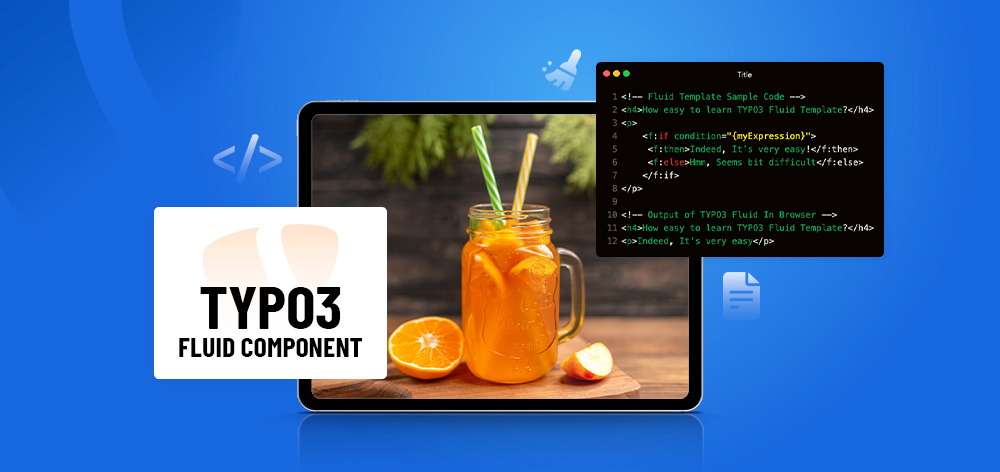


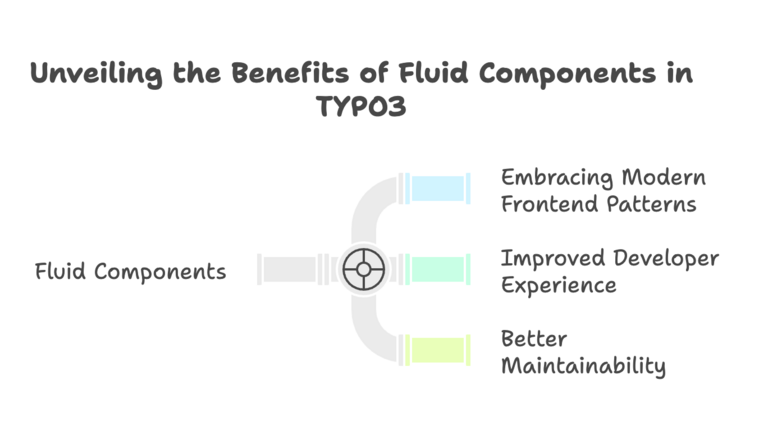
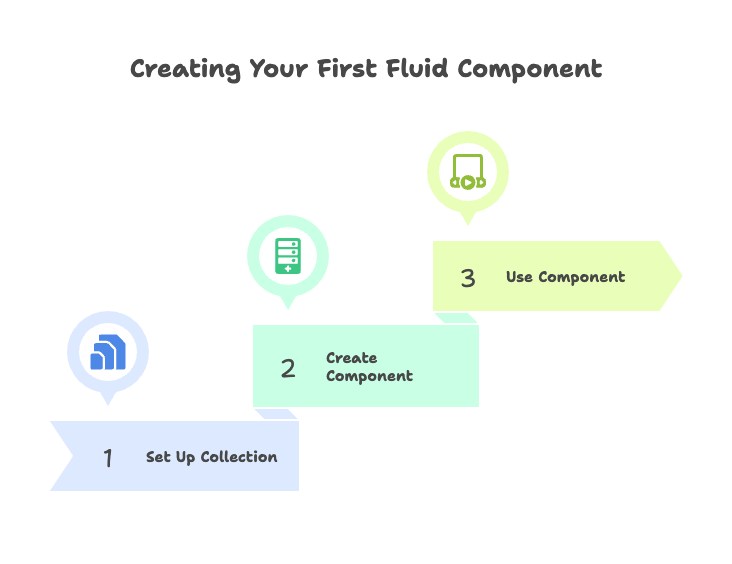
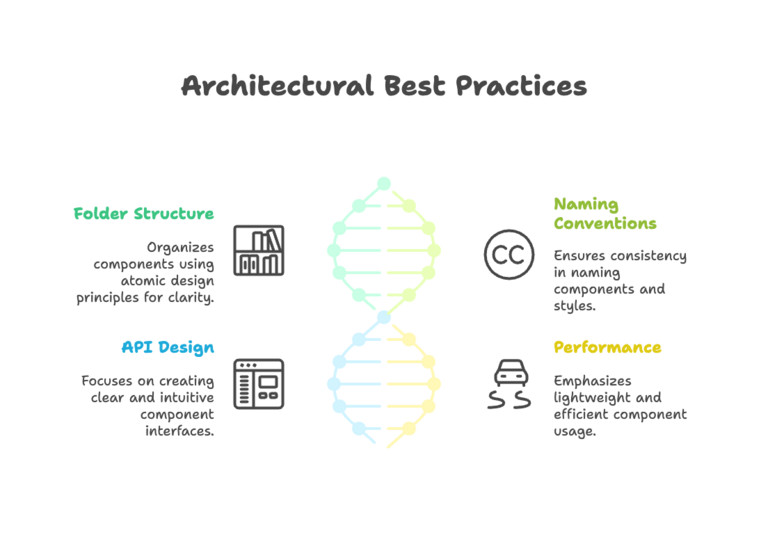



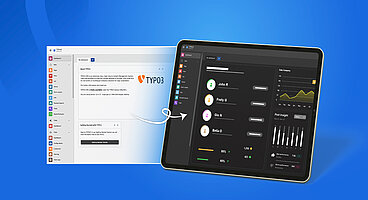
Wolfgang Weber
Brand & Communication LeadWolfgang Weber gestaltet TYPO3 mit Leidenschaft und Expertise. Als langjähriger TYPO3-Enthusiast hat er zu zahlreichen Projekten beigetragen, die Websites schneller und sicherer machen. Abseits von TYPO3 findet man ihn…
More From Author